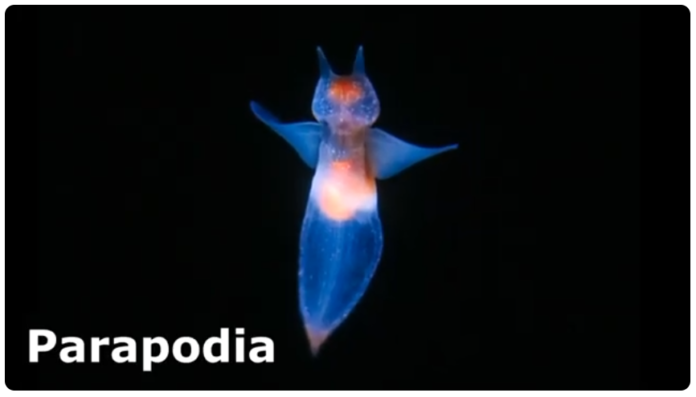
The ocean is home to many mysterious creatures, The sea angel is also one of those creatures. the angels of the sea also beautifull creature. Although not as famous as dolphins or whales, angels fish are equally fascinating and offer a glimpse into the varied wonders of marine life. In this blog post, we will delve into the world of sea angels, their appearance, habitat, behavior, and why they are special.
What Are Sea Angels?
The scientific name of Sea angels is Gymnosomata, are a group of small, pelagic swimming sea slugs. Despite their name, sea angels are not real angels.Sea angels are a type of mollusk, specifically a type of pteropod. Pteropods are often called “sea butterflies,” but angels fish are very different from their pupal cousins.
Appearance and Physical Characteristics
Sea angels are known for their translucent, gelatinous bodies that give them an almost ghostly appearance. Their bodies are can be up to 5 centimeters long, Although most species are smaller. They have wing-like structures called parapodia, which they swim in the water. These “wings” are one of the reasons they are called sea angels.
Sea Angels bodies are fully transperent. making them look delicate and otherworldly. They come in a variety of colors, from clear and white to shades of pink and orange, depending on the species. This combination of transparency and subtle colors makes the angels fish look like tiny, floating apparitions in the ocean.
Habitat and Distribution
Sea Angel fish are found in oceans all over the world, they found in icy waters of the Arctic and other occeans. They prefer the open sea, away from the coast, where they move with the currents and tides. Unlike many sea creatures, angels fish do not live close to the ocean floor. Instead, they thrive in the water column,that live usually at a depth of about 500 meters below the surface.
Feeding and Diet
Sea angels are carnivores and that eat specialized diet. They feed primarily on sea butterflies, their closest relatives. To catch their prey, angels fish have interesting hunting techniques. They use their radula, a tongue-like organ covered with small, sharp teeth, to capture and eat their prey. This method of feeding is quite efficient and allows them to thrive in their environment.
The diet of sea angels makes them an integral part of the marine food web. By hunting sea butterflies, they help maintain the balance of these populations in the ocean. This interaction also highlights the complex relationships that exist within marine ecosystems.
Reproduction and Lifecycle
Angelfish are hermaphrodites, meaning each individual has both male and female reproductive organs. This trait allows them to mate with any other angelfish they encounter, increasing their chances of breeding in the wide open ocean. During mating, they exchange sperm with each other, ensuring genetic diversity in their offspring.
After fertilization, sea angels lay eggs, which hatch into free-swimming larvae. These larvae go through several stages of development before becoming adults. The entire life cycle of the angels fish adapts to the environment, ensuring their survival in the open ocean.
Adaptations to the Environment
Living in the open ocean comes with its own set of challenges, and seagulls have adapted to survive in this unique habitat. Their transparent bodies help them avoid predators by making them less visible in the water. Additionally, their wing-like parapodia allow them to swim efficiently, conserving energy as they move through the water column.
Another interesting adaptation is their ability to produce bioluminescence. Some species of angels fish can emit light, which can serve a variety of purposes, such as attracting mates or deterring predators. This bioluminescent ability adds another layer of intrigue to these already fascinating creatures.
The Role of Sea Angels in Marine Ecosystems
Sea angels play an important role in marine ecosystems. By preying on sea butterflies, they help control the population of these creatures, ensuring a balanced ecosystem. Additionally, sea anemones are a food source for larger predators, such as fish and other marine animals. This positions them as both predator and prey in the marine food web, highlighting their importance in maintaining the health of marine ecosystems.
Human Impact and Conservation
Like many marine creatures, sea angels are affected by human activities. Climate change, pollution, and ocean acidification pose major threats to their survival. A changing climate affects the temperature and chemistry of the oceans, which can affect the distribution and abundance of angels fish and their prey.
Pollution, especially plastic pollution, is another major threat. Microplastics in the ocean can be ingested by angels fish, causing health problems and death. Ocean acidification, caused by excess carbon dioxide absorption by oceans, can affect the availability of calcium carbonate, which is essential for the shells of their prey, sea butterflies.
Conservation efforts are important to protect angels fish and the wider marine environment. Reducing carbon emissions, reducing plastic use, and protecting marine habitats are essential steps to ensure the survival of these magical creatures.
Fascinating Facts About Sea Angels
- Unique Movement: Sea angels move by flapping their wing-like parapodia, resembling the way birds fly through the air. This unique mode of locomotion sets them apart from other marine animals.
- Transparent Bodies: Their transparent bodies allow them to blend into their surroundings, making it difficult for predators to spot them. This natural camouflage is an excellent defense mechanism.
- Bioluminescence: Some species of angels fish can produce light through bioluminescence. This ability is not only mesmerizing but also serves various ecological purposes.
- Hermaphroditic Reproduction: Being hermaphrodites, angels fish can mate with any individual of their species, increasing their chances of successful reproduction in the vast ocean.
- Wide Distribution: Sea angels are found in oceans worldwide, from the polar regions to the tropics, showcasing their adaptability to different marine environments.

Culclusion
In conclusion, angels fish are a testament to the incredible diversity and beauty of marine life. Their delicate appearance, fascinating behavior, and essential role in the ocean ecosystem make them a subject worth exploring and protecting. As we learn more about these ethereal creatures, we can better appreciate the wonders of the ocean and the importance of conserving it for future generations.
FAQs
1. What are sea angels?
Sea angels are small, pelagic sea slugs known for their translucent bodies and wing-like parapodia. They belong to the group Gymnosomata and are found in oceans worldwide.
2. What do sea angels eat?
Sea angels primarily feed on sea butterflies, using their radula to grasp and consume their prey.
3. Where can sea angels be found?
Sea angels are found in the oceans of all over the world, from the Arctic to the tropics, usually He live at depths ranging from the surface to about 500 meters.
4. How do sea angels reproduce?
Sea angels are hermaphrodites, meaning they have both male and female reproductive organs. They can mate with any individual of their species, exchanging sperm to fertilize their eggs.
5. Why are sea angels important?
Sea angels play a crucial role in marine ecosystems by helping control the population of sea butterflies and serving as a food source for larger predators.

